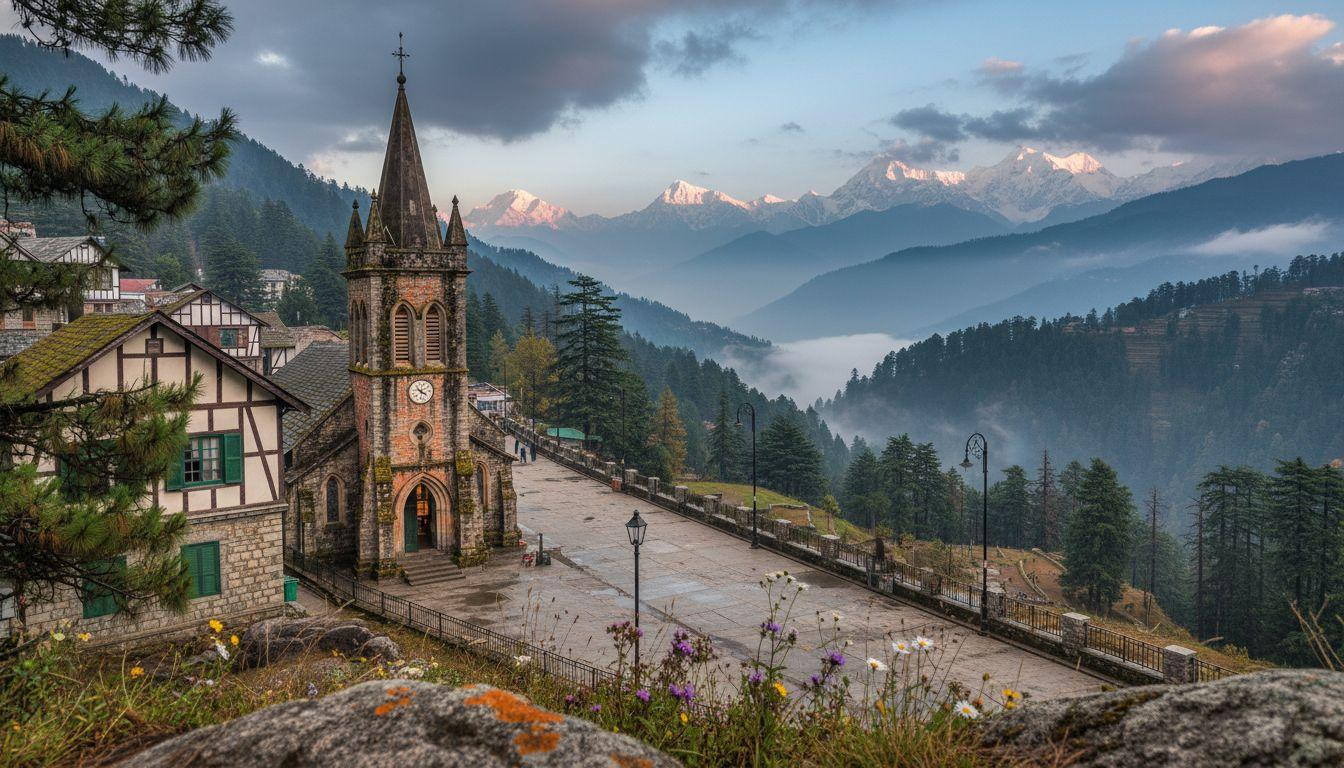Morning mist rises from Shimla’s pine-covered slopes as the first light touches colonial facades at 7,238 feet above sea level. This Himalayan hill station, carved into a ridge stretching 5.7 miles east to west, whispers stories of British summers and modern mountain escapes. Golden Fern Resort sits 2.5 miles from Mall Road, where colonial architecture meets contemporary wellness in the heart of Himachal Pradesh.
Where colonial hills meet modern refuge
The drive from Chandigarh winds through 70 miles of mountain roads before reaching Shimla’s seven-spur ridge system. Golden Fern Resort occupies a strategic position on the Shimla-Kalka Highway, offering immediate access to both colonial landmarks and natural hiking trails. The property’s modern architecture contrasts deliberately with the Tudor-style Viceregal Lodge built in 1888.
Shimla’s 170,000 residents navigate streets designed for British administrators who made this their summer capital in 1864. The Kalka-Shimla Railway, completed in 1903 and now UNESCO-protected, delivers visitors through 103 tunnels and across 969 bridges. Modern accommodations like Golden Fern provide contemporary comfort within this historical landscape.
Beyond the resort walls: Shimla’s true draw
Christ Church rises from The Ridge with neo-Gothic spires reaching toward peaks that tower above 8,000 feet. Built in 1857, this structure claims distinction as North India’s second-oldest church after St. John’s in Meerut. Stained-glass windows filter mountain light across stone floors where British congregations once gathered.
Colonial architecture that defines the skyline
The Viceregal Lodge commands Shimla’s highest residential point with Tudor stone walls and sprawling gardens. Today’s Indian Institute of Advanced Study occupies rooms where British Viceroys planned summer governance. Gaiety Theatre continues hosting cultural performances in its Victorian-era halls, maintaining traditions established during colonial rule.
Local markets where mountain culture thrives
Lakkar Bazaar showcases Himachali woodcraft in shops built along steep mountain slopes. Local artisans carve traditional designs into deodar cedar, creating souvenirs that reflect regional heritage. Mall Road pedestrian zones stretch along the ridge crest, connecting colonial landmarks with modern shopping areas.
Himalayan wellness and mountain air
The 7,238-foot elevation creates natural air conditioning that draws visitors from Delhi’s summer heat. November temperatures hover between 50-68°F, providing ideal conditions for mountain hiking and colonial architecture tours. Recent visitor surveys show 85% satisfaction rates for Shimla’s climate during autumn months.
Why 2,200-meter altitude matters
This elevation zone offers significant cooling without extreme altitude effects experienced above 3,000 meters. Jakhu Hill reaches 8,051 feet, providing hiking opportunities for visitors seeking higher viewpoints. The resort’s spa treatments capitalize on this mountain air quality, offering wellness programs enhanced by natural elevation benefits.
Mountain experiences beyond accommodation
Local tourism boards report average visitor stays of 3.2 days, with most guests exploring colonial walking routes and nearby village markets. Traditional Himachali dham restaurants serve multi-course meals featuring local specialties like chana madra and siddu bread. Spa treatments range from $30-50 per session, significantly below comparable mountain resort pricing.
The real discovery: Shimla’s surrounding villages
Kufri village sits 10 miles higher up the mountain chain, offering ski slopes and potato farming terraces carved into Himalayan slopes. Mashobra provides apple orchards and dense pine forests 8 miles from Shimla’s tourist crowds. These mountain communities preserve traditional architecture and farming practices often overshadowed by colonial tourism narratives.
Transportation connections make village exploration accessible from Golden Fern’s base location. Local taxi services charge $15-25 for half-day village tours, while the UNESCO railway provides scenic connections to valley communities. Mountain homestays offer authentic cultural experiences beyond standard hotel amenities.
Your questions about Golden Fern answered
How do I reach Golden Fern from major Indian cities?
Delhi flights to Shimla Airport cost $100-150 one-way with 1-hour flight time, followed by 15-minute taxi rides to the resort. The Kalka-Shimla toy train provides UNESCO heritage experience over 5.5 hours, connecting with rail services from major cities. Road access via Chandigarh requires 3-hour drives through mountain highways.
What’s the best season for Shimla mountain experiences?
March through June offers mild temperatures and accessible hiking trails, while September through November provides autumn colors and comfortable accommodation rates. Winter snow from December through February creates different scenic experiences but limits some outdoor activities. Recent climate data shows October and November averaging 60°F daily highs.
How does Golden Fern compare to other Shimla accommodations?
Mid-range rooms cost $80-120 nightly compared to heritage properties at $200+ and budget options at $40-60. The resort’s modern amenities contrast with colonial-era hotels offering historical character but potentially outdated facilities. Location advantages include highway access and ridge viewpoints without Mall Road pedestrian congestion.
Evening light fades across Himachal’s peaks as mountain air carries the scent of pine and distant wood smoke. Shimla’s colonial spires catch final sunbeams while modern comforts await in valleys carved by ancient glaciers and British ambitions.
